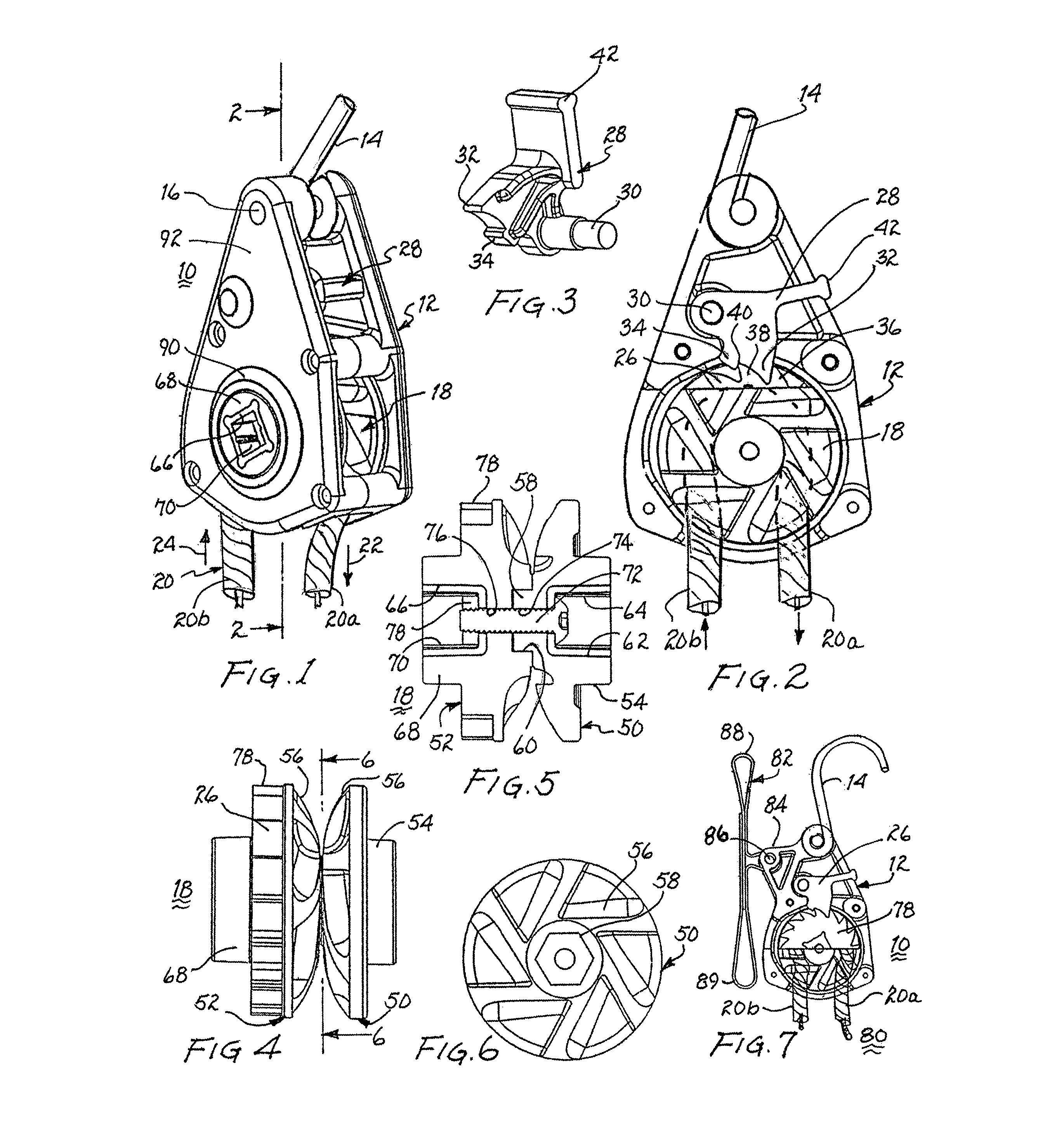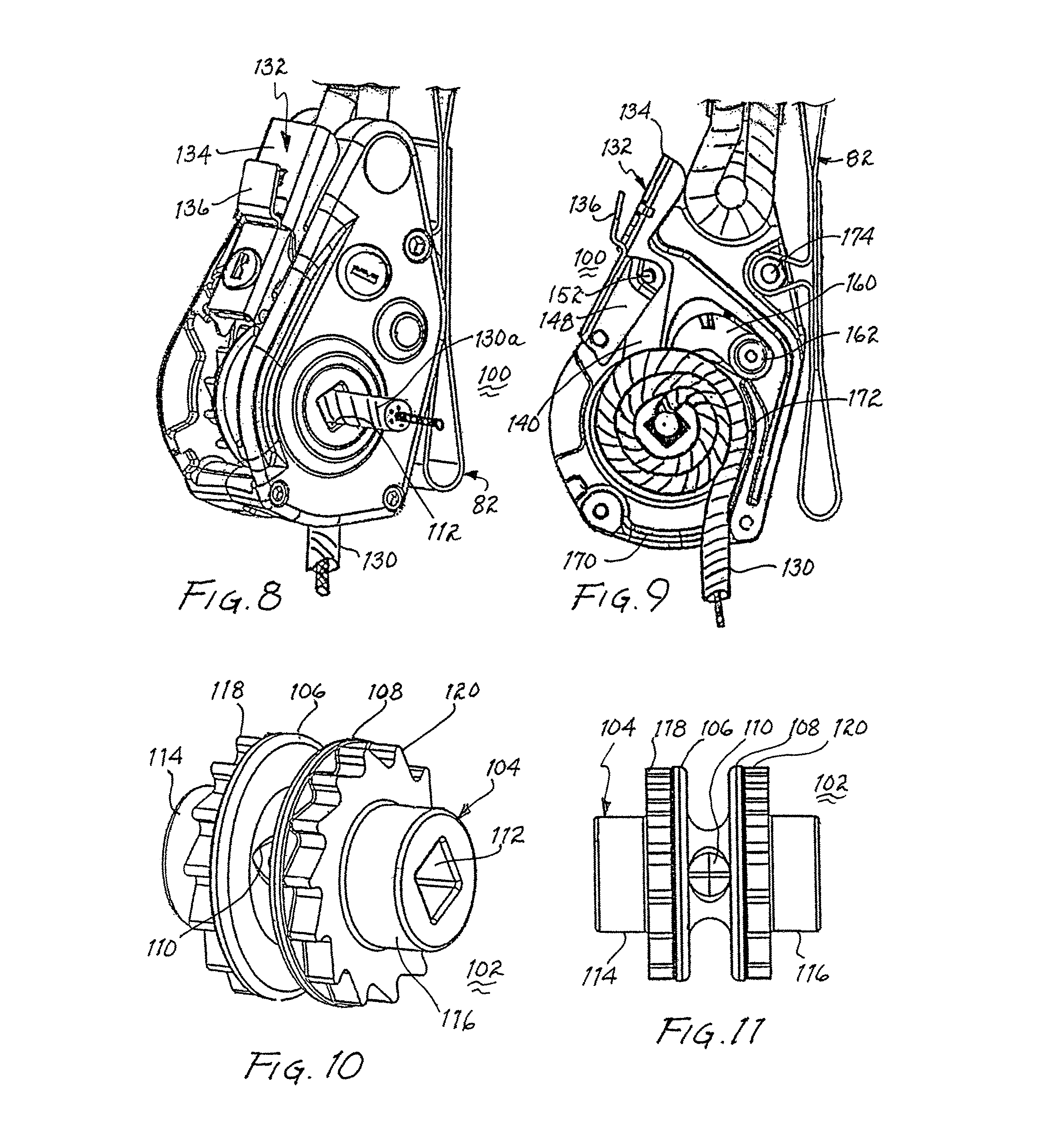Heavy duty ratchet
a ratchet and heavy-duty technology, applied in the field of ratches, can solve the problems of essentially limited tension force that can be applied, and achieve the effects of increasing the force on the entering cord, preventing slippage, and increasing the amount of force applied
- Summary
- Abstract
- Description
- Claims
- Application Information
AI Technical Summary
Benefits of technology
Problems solved by technology
Method used
Image
Examples
Embodiment Construction
[0048]Referring to FIG. 1, there is shown a ratchet 10 defined in part by a housing 12. A cord or hook 14 is secured to the upper end of housing 12 by a shaft 16 lodged in the housing. A spool 18 is rotatably mounted within the housing. A cord 20, extends into housing 12 and partially encircles spool 18. Upon pulling on exiting cord 20a, as presented by arrow 22, entering cord 20b is drawn into housing 12, as presented by arrow 24 and about spool 18 and the spool will rotate commensurately.
[0049]FIG. 2 is a partial cutaway view of ratchet 10 and essentially taken along lines 2-2, as shown in FIG. 1. Spool 18 includes a ring of teeth 26. A pawl 28, as shown in FIGS. 2 and 3, is pivotally mounted within housing 12 on shaft 30. The pawl includes a primary prong 32 and a secondary prong 34. In operation, the primary prong nests in the triangular space between two adjacent teeth 36, 38 and secondary prong 34 extends past tip 40 of tooth 38. Thereby, pawl 28 prevents rotation of spool 18 ...
PUM
| Property | Measurement | Unit |
|---|---|---|
| diameter | aaaaa | aaaaa |
| tension | aaaaa | aaaaa |
| circumference | aaaaa | aaaaa |
Abstract
Description
Claims
Application Information
 Login to View More
Login to View More - R&D
- Intellectual Property
- Life Sciences
- Materials
- Tech Scout
- Unparalleled Data Quality
- Higher Quality Content
- 60% Fewer Hallucinations
Browse by: Latest US Patents, China's latest patents, Technical Efficacy Thesaurus, Application Domain, Technology Topic, Popular Technical Reports.
© 2025 PatSnap. All rights reserved.Legal|Privacy policy|Modern Slavery Act Transparency Statement|Sitemap|About US| Contact US: help@patsnap.com



